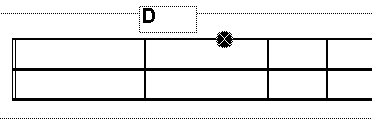
Here are some simple dulcimer chords to get you started.
This is assuming you're in DAD tuning.
 |
| Remember your tuning is symmetrical, so you can play any chord upside down. Try fretting the first or melody string at the 2nd fret instead of the bass, as shown and see how it sounds. |
 |
| There are some great two chord songs that you can play. Try Hank William's "Jambalaya" (Technically this chord has only two notes the 1st and 5th making it an ambiguous or "power chord" in rock music. Missing the 3rd it can be major or minor - but it sounds good and it works - so we'll use it. |
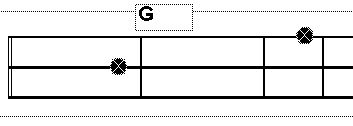 |
| With D, A, & G you can play thousands of "three chord trick" songs - see if you can pick out "This land is your land" by Woody Guthrie (hint - the first "Your land" is a G chord. |
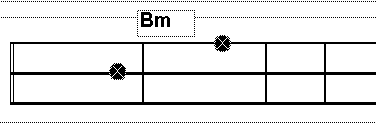 |
| Now with the relative minor chord another gazillion songs open up to you. Get out your "Rise up Singing" book and see what you can find. |
 |
| Here's another nice minor chord that will allow you to play "The Water is Wide" as you may have heard me play on one of my YouTube clips. It's your first 3 finger chord. Try using thumb on melody, ring finger on middle string, and middle finger on the bass. |
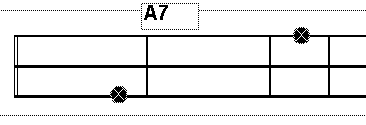 |
| I walk up to this chord on the line "Wings to fly...." in Water is Wide. |
Here are few more:
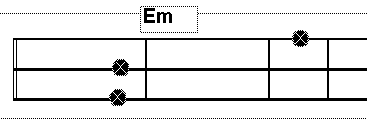 |
| Remember you can invert this too. |
 |
For those of you who have the full or partial "1 1/2" fret... frets that are not "traditional" are given names like 1 1/2 or 6 1/2 to not disturb the numbering order used in so many tablature systems.
 |
| There is a C chord available farther up the fingerboard without the partial fret. It will have the notes C - E - G - Can you find it? Try using the fretboard map below. |
 |
| There is normally no F note or chord available when tuned to DAD - so this really increases your flexibility when jamming with chromatic instruments. |
 |
| Here a full three note Am chord but the "ambiguous" two finger A chord shown above will do in most cases too. |
| A substitute for all these dots and pictures often used is a form of tablature similar to that used for guitar, banjo etc. Three lines of text are seen as the three strings of your dulcimer as you look down on them. Numbers tell your left hand which fret to press that string on. It's helpful to use a font like courier as it gives equal space for each letter or space and keep things aligned.
All of the chords just shown above would look like this... |
 |
| Below is Skip to my Lou - a two chord song mapped out in tab. Give it a try. It's from Jerry Rockwell's theory newsletter you can find here. |
 |
| If you know the notes in a chord and want to find if you can play it on the dulcimer a fret board map can be useful. Notice the note names starts over at the 7th fret. This is the octave point so 8 - 9 - 10 is like 1 - 2 - 3 but an octave higher. |
 |